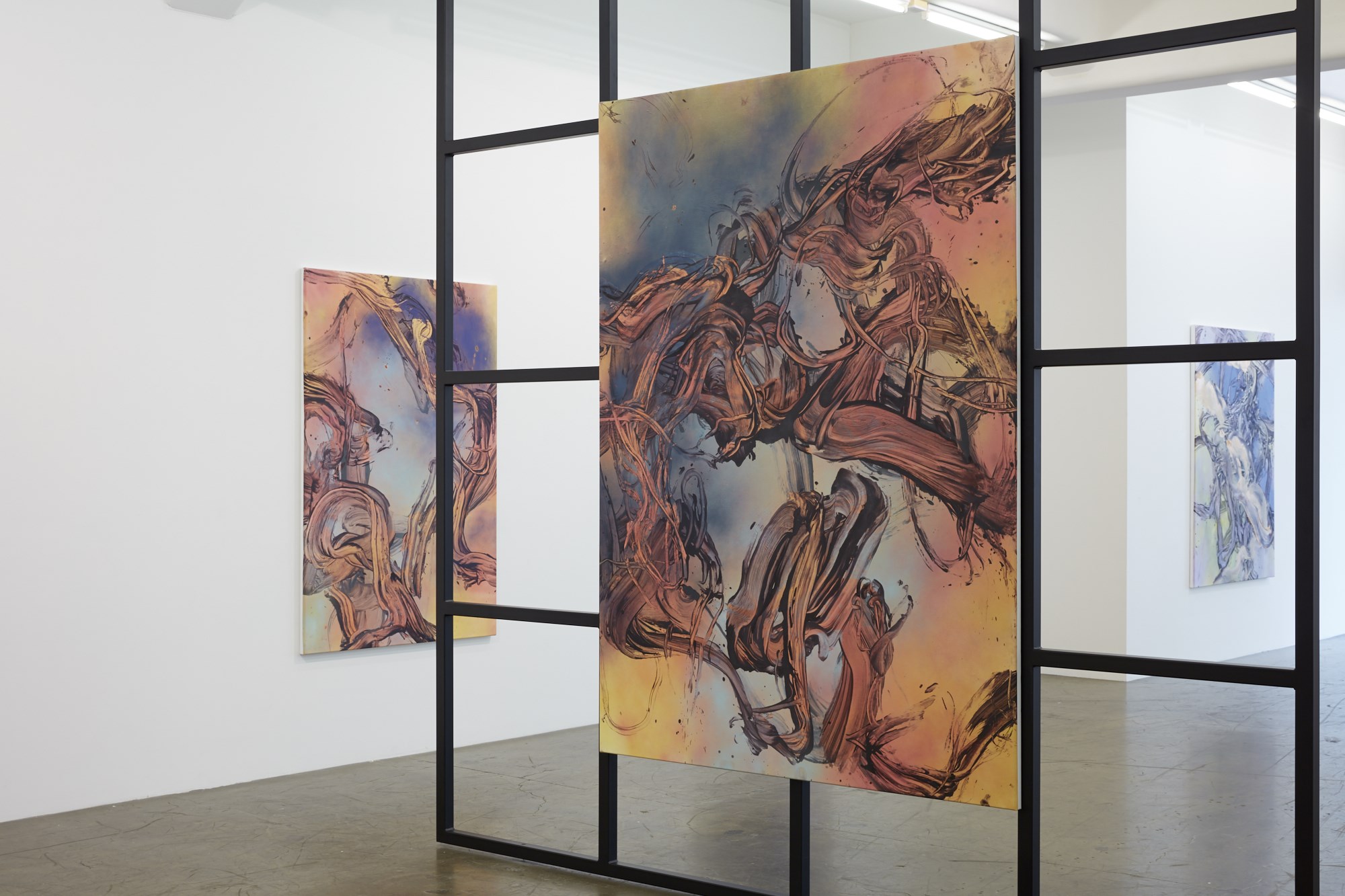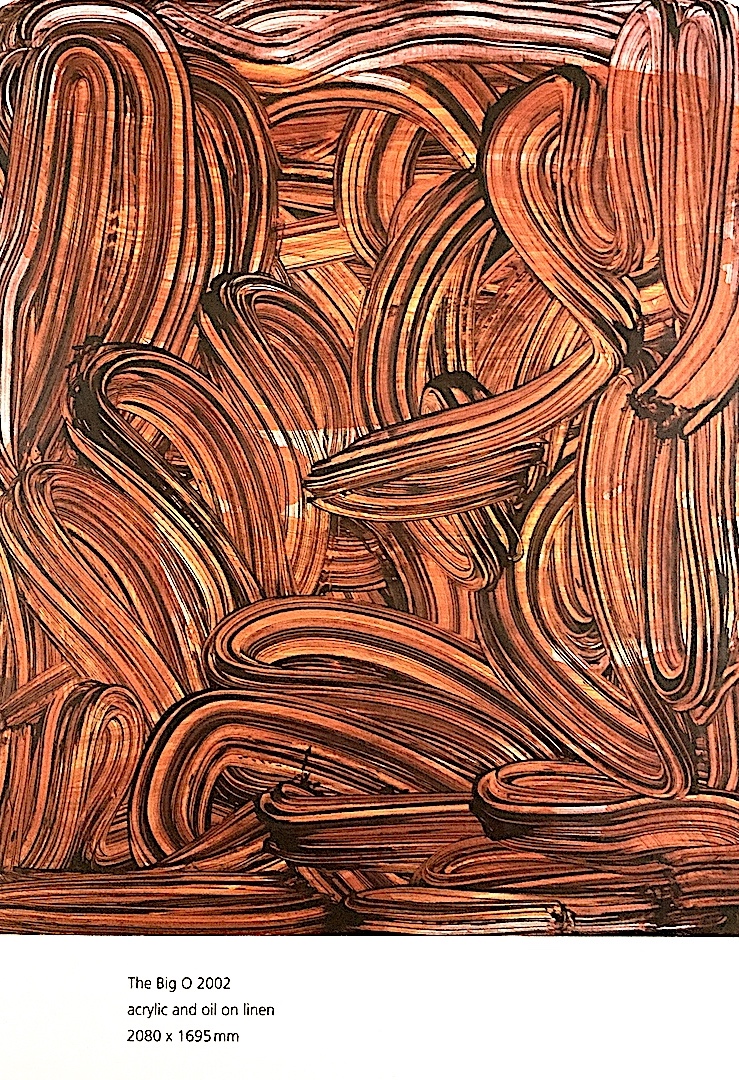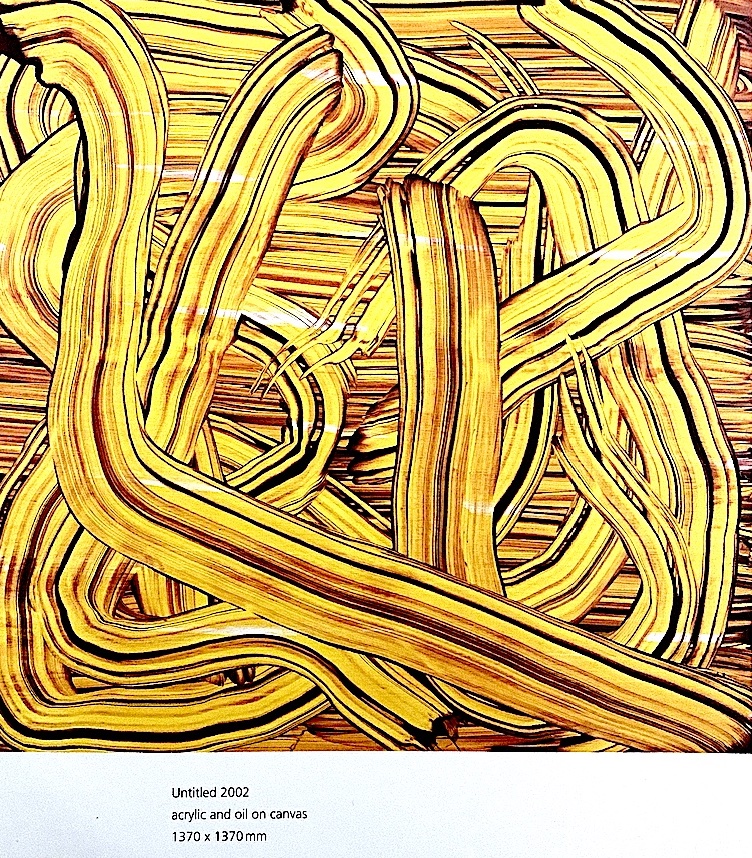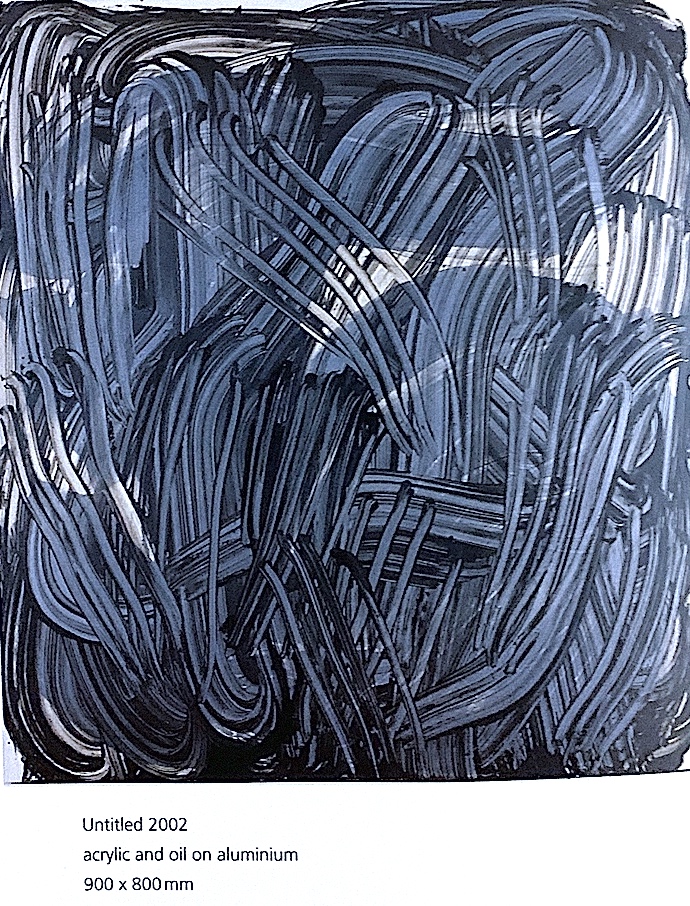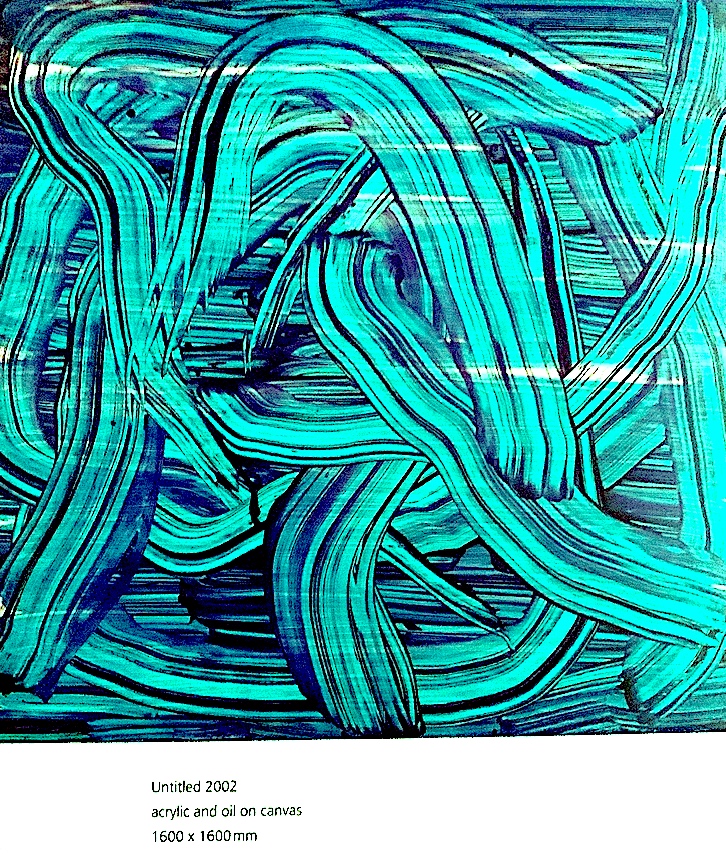Artist Research: Judy Millar (b 1957, New Zealand).
Judy Millar once discussed with Anthony Byrt (‘How to Paint Backwards’, 2002), that at one point “she was frustrated because her gestures were limited by arm-span, which was limiting the size of the canvas and keeping the forms fairly closed. So there’s always been this desire to get bigger and to be in the work more.”
Millar paints in a range of sizes, and on a variety of surfaces, from small paper works framed behind glass to more well-known large abstract paintings on canvas and linen. I enjoy seeing her work computerised, industrially manufactured and enlarged on a massive scale in a sculptural context which is both striking in black and white, and/or colour.
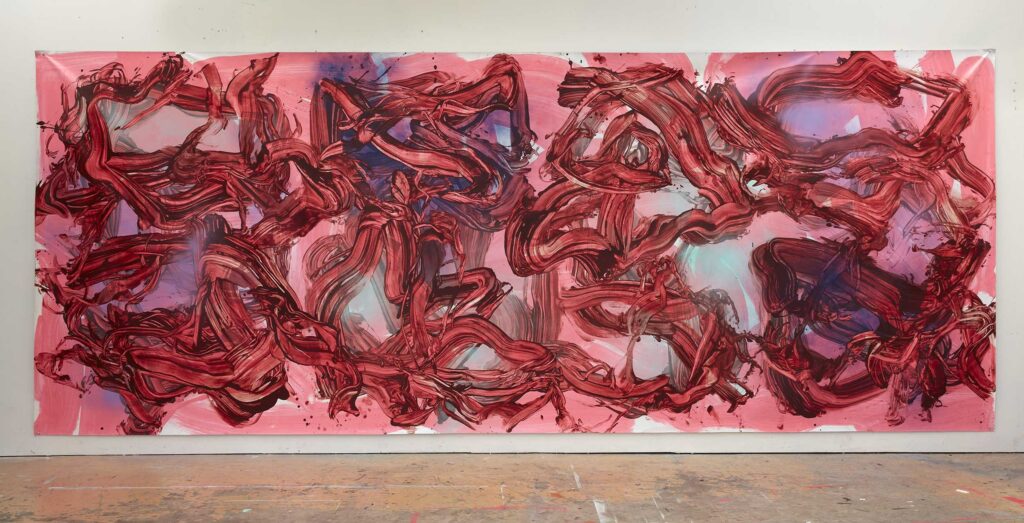
2019 Installation. Credit: Sam Hartnett https://www.gowlangsfordgallery.co.nz/exhibitions/a-world-not-of-things?id=14446&eid=
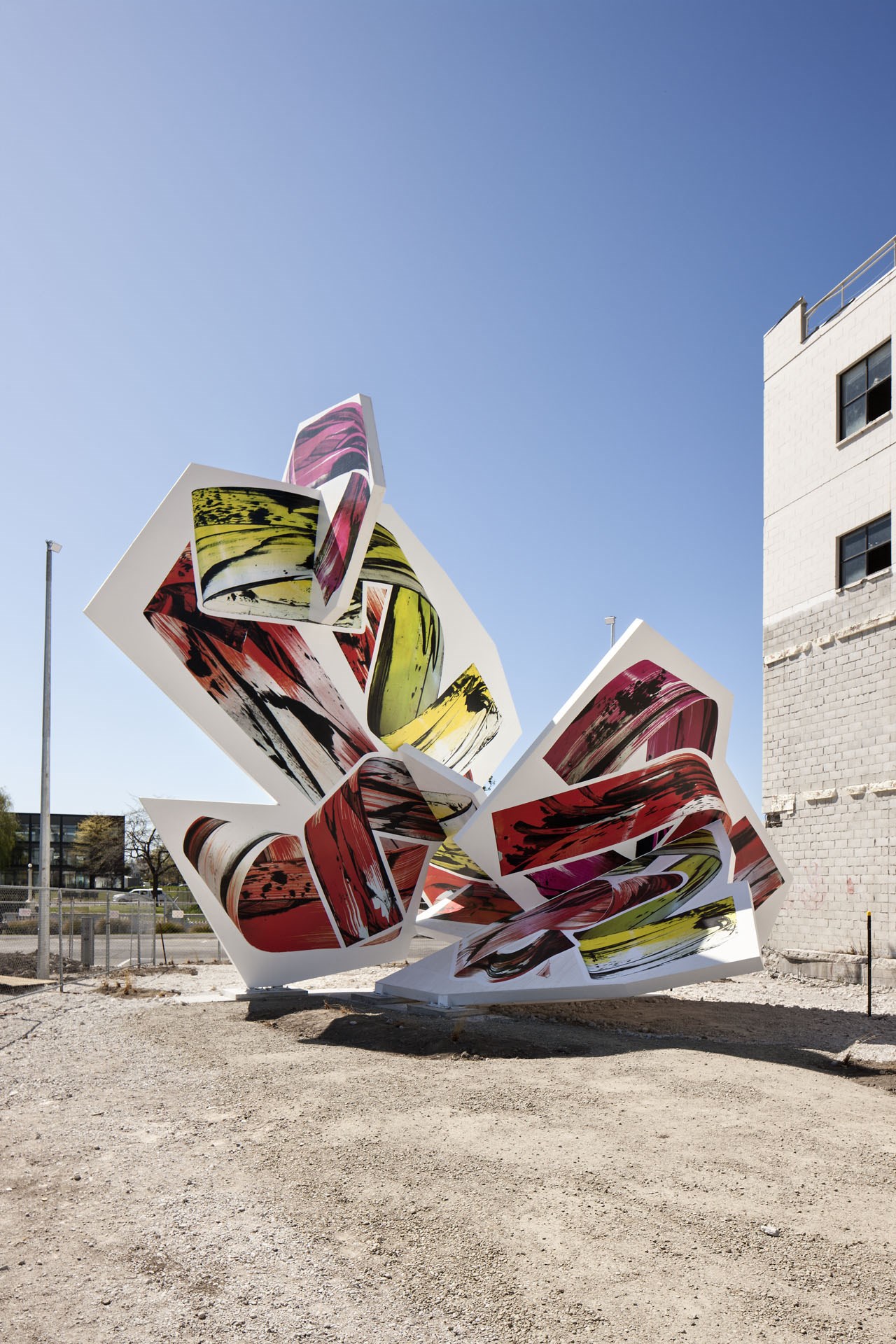
Commissioned by SCAPE Public Art for Christchurch’s SCAPE 8 New Intimacies.
Armagh Street, Christchurch Central, opposite the entrance to New Regent Street.
Photography by Simon Devitt. Digital process : PixSolution
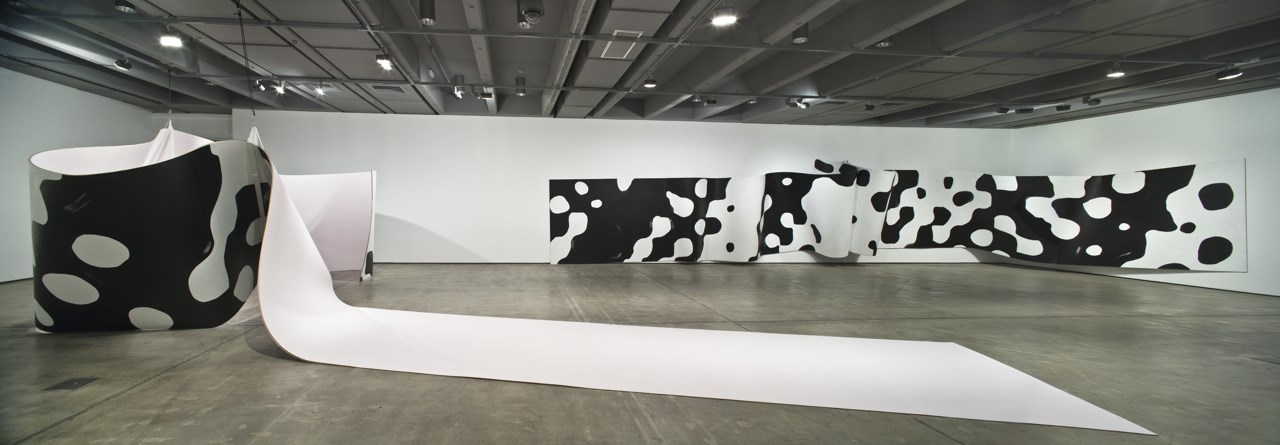
Exhibition Be Do Be Do Be Do 8 June – 27 July 2013; IMA, Brisbane, Australia
https://www.gowlangsfordgallery.co.nz/artists/judy-millar/works
I personally am attracted to large abstract paintings that promote contrasting atmospheres such as warmth and thickness, coolness and thinness. I like a surface to disappear under heavy, sticky, thick gestures and paint such as the works of Willem de Kooning (1904-1987), Jackson Pollock (1912-1956), Helen Frankenthaler (1928-2011), Gerhard Richter (b 1932) and André Hemer (b 1981). Their works of art tempt me to step within their luxurious mud pool soups, and to feel their abundance of shapes, lines and colours.

© 2018 The Willem de Kooning Foundation/Artists Rights Society (ARS), New YorkGuggenheim Museum. Willem de Kooning. Accessed October, 6, 2021. https://www.guggenheim.org/artwork/992
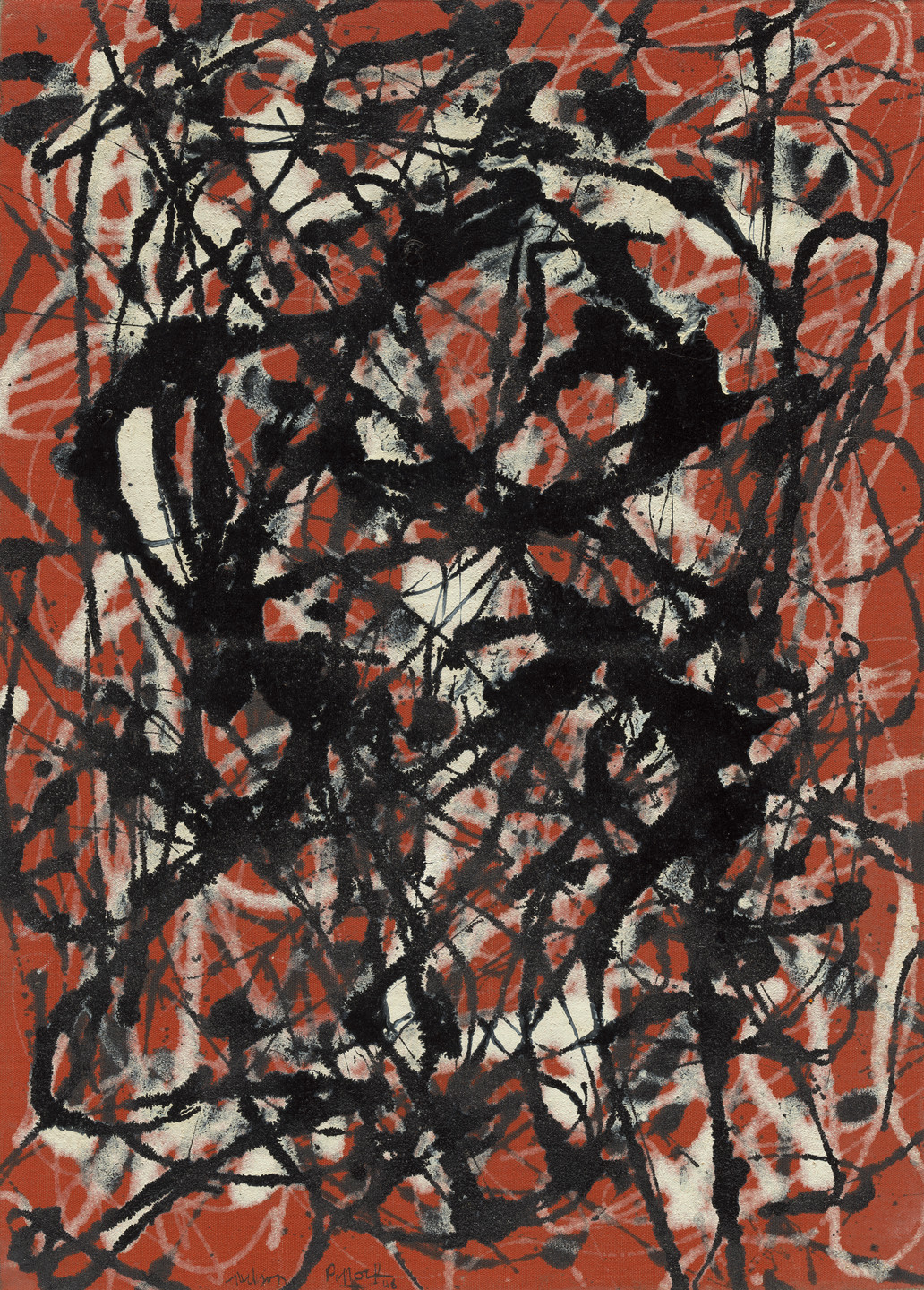
Credit The Sidney and Harriet Janis Collection. Object number 645.1967. Copyright
© 2021 Pollock-Krasner Foundation / Artists Rights Society (ARS), New York
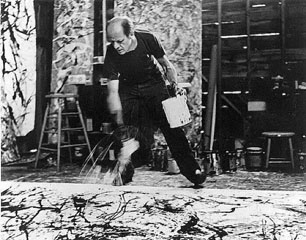
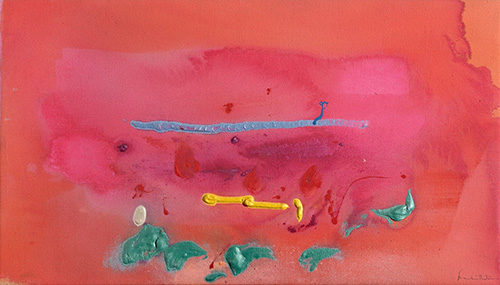
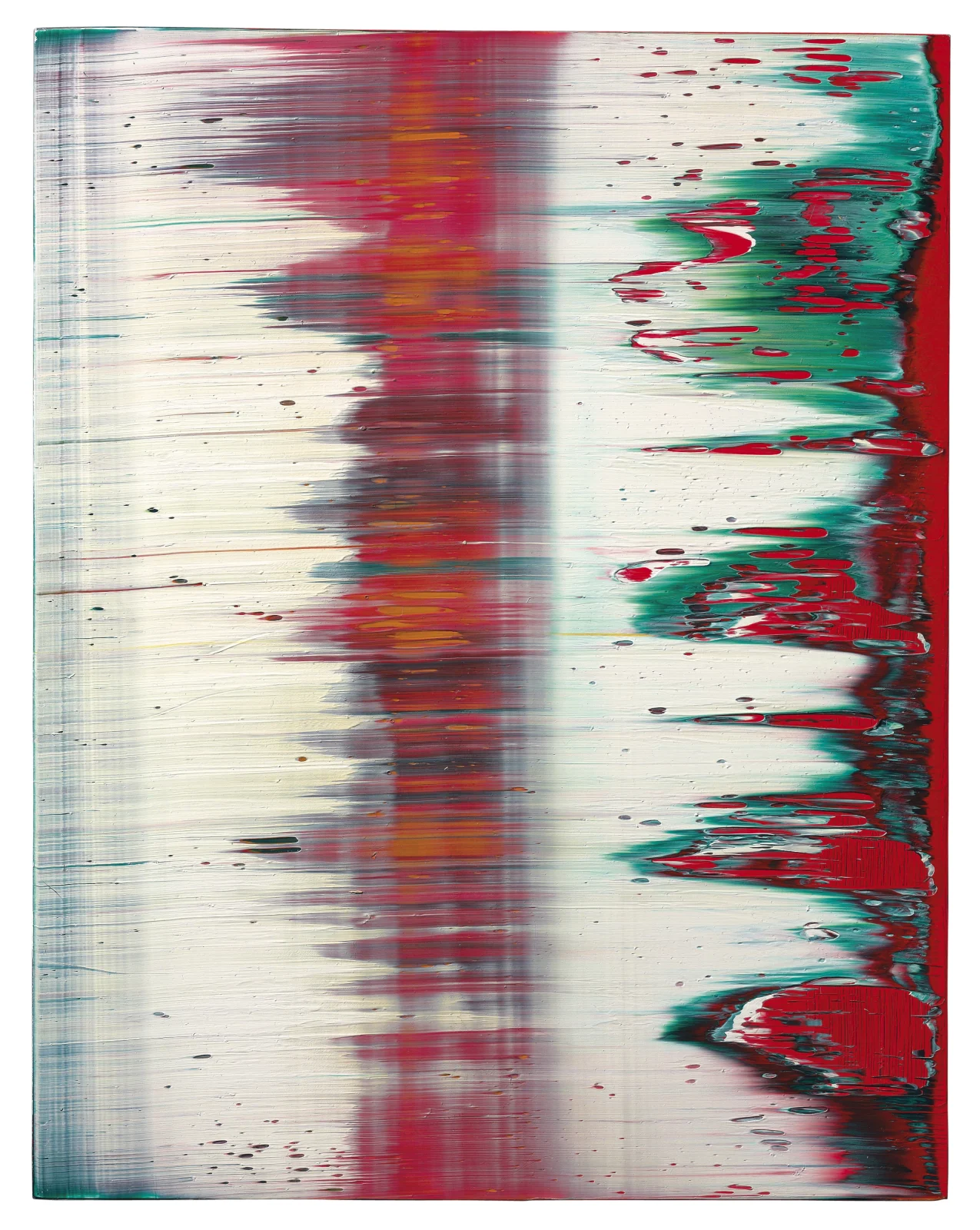
https://www.vedovigallery.com/artists/59-gerhard-richter/works/344-gerhard-richter-fuji-1996/.
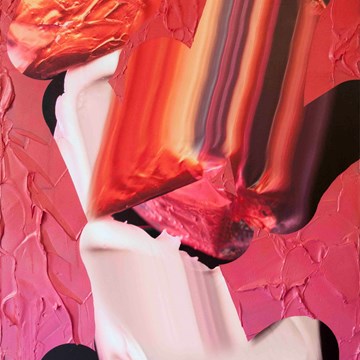
Millar’s work is not oppressively saturated with sticky chunky paint forms. Instead, her translucent, thinly applied works command a different emotion. They reveal a thin cobweb three-dimensionality, and a lightness of being which curls, unfurls and ripples. Yet, I still feel I could penetrate and immerse myself in her watery world works.
Her Postmodern swirling, swerving gestural marks appeal to me, because they move with fluidity like a dancer. She subtly produces layers of attenuated paint to the surface using tools like a mop, rag or brush, but sometimes she shifts paint with the side of her hand, and recently an air brush has been utilised (Figures 14, 15).
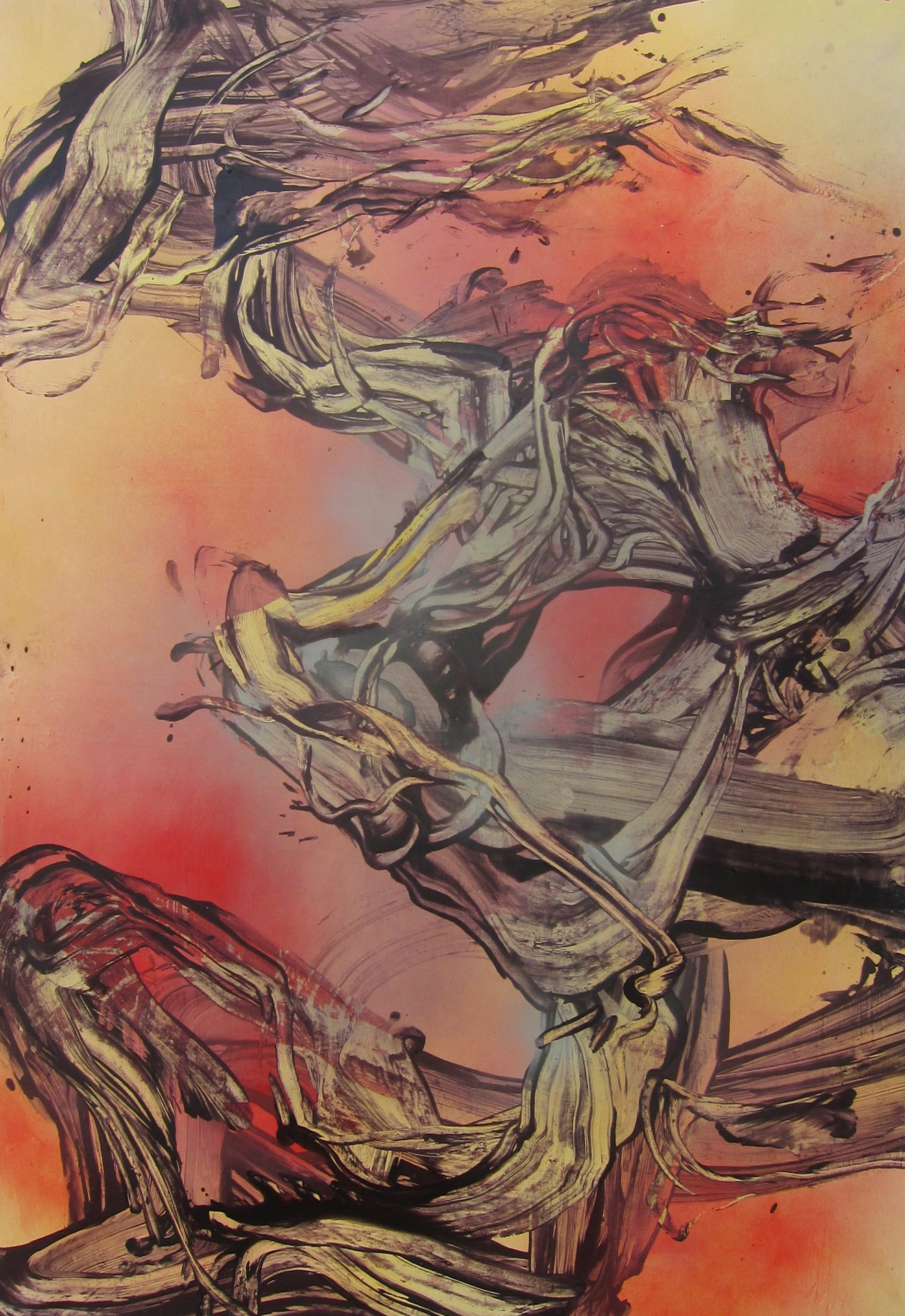
Millar carefully considers the construction of the canvas space, spending time preparing and making the surface very smooth with an exact, and perfectly primed, gessoed and waxed finish. The paint pigment via the turps cuts through the wax to grip onto the ground surface. Oils imported from Holland are uncut by other chemicals or filler agents. She executes her paintings quickly (like is recommended for this painting brief), with large bodily gestures. Millar shifts the thin runny mixture of paint and turps, which washes and flows across her painting surfaces.
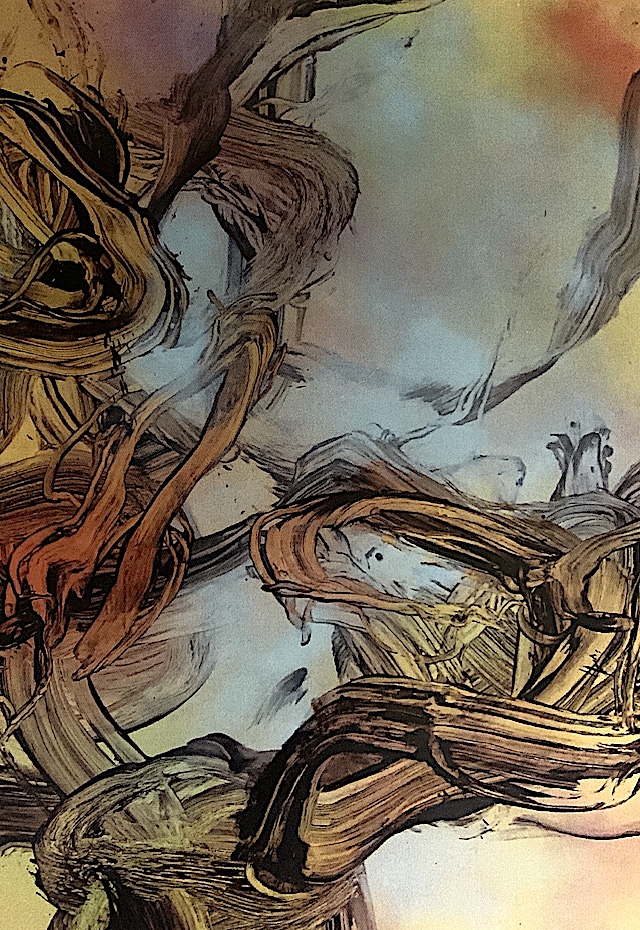
Bibliography
Gow Langsford Gallery. Antony Bryt. ‘How to Paint Backwards.’ Judy Millar Essay, Book.
Gow Langsford Gallery. Judy Millar. Accessed October 6, 2021. https://www.gowlangsfordgallery.co.nz/artists/judy-millar/available-works
Gow Langsford Gallery. André Hemer. Accessed October 6, 2021. https://www.gowlangsfordgallery.co.nz/artists/andré-hemer
Guggenheim Museum. Willem de Kooning. Accessed October 6, 2021. https://www.guggenheim.org/artwork/992.
The Museum of Modern Art. ‘Free Form’. Jackson Pollock. Accessed October 6, 2021. https://www.moma.org/collection/works/80170.
Robin Rosenberg. Helen Frankenthaler. Accessed October 6, 2021. https://robinrosenbergfineart.com/portfolio/helen-frankenthaler/.
Vedovi Gallery. Gerhard Richter. Accessed October 6, 2021. https://www.vedovigallery.com/artists/59-gerhard-richter/works/344-gerhard-richter-fuji-1996/.
Wikipedia. Jackson Pollock. Accessed October 6, 2021.https://en.wikipedia.org/wiki/Jackson_Pollock.

